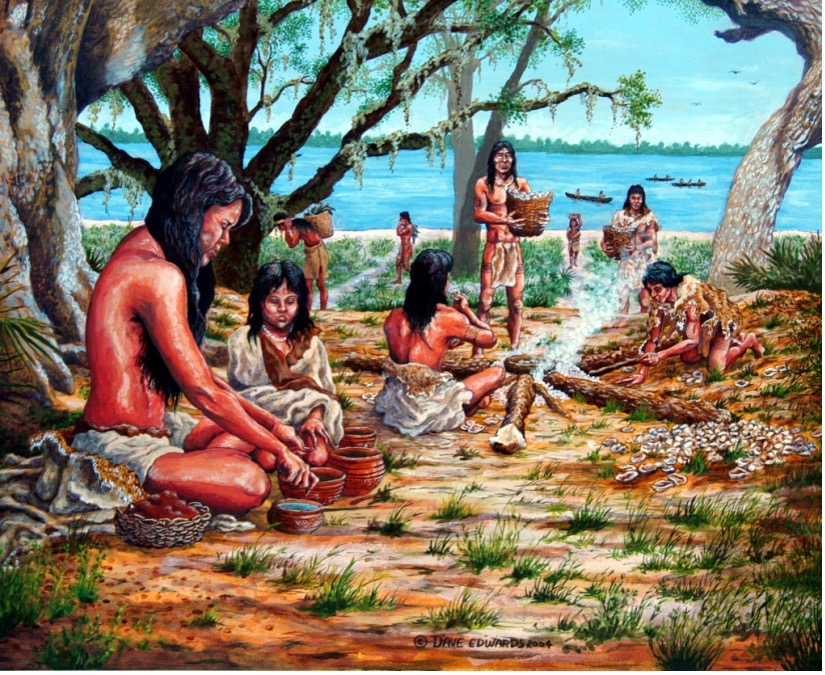
St. Andrews has been an excellent place to live for as long as people have inhabited the Americas. Locally found artifacts attest that Native Americans have been in our area for at least 13,000 years.
Local Native Americans had a rich and varied culture that changed through time in response to climate conditions, resource availability, and population increases. As evidenced by the numerous shell middens scattered along St. Andrews Bay, they gathered shellfish from St. Andrews Bay.
When the Spanish arrived around 1500, our area was inhabited by the Chatot and Yucci tribes. Shortly after contact, the Chatot became extinct (as did more than 90% of Florida native peoples), and the Yucci escaped such a fate by dispersing to the north and west.
The area gradually became peopled again around 1700 AD and later by Creeks and Cherokees who had evaded relocation to the West, culminating in the Trail of Tears in the 1830s. By this time, many anglo settlers had moved into the area, and a new Native American tribal group was organized in south-central Florida. They became the Seminoles.

The first European settlement in the St. Andrews Bay area was along Beach Drive between Frankford Avenue and Lake Caroline, known as Old Town or St. Andrews City. Retired Georgia governor John Clark and his wife Nancy built a home and lived there from 1827 until their deaths in 1832.
Just a few people resided year-round in St. Andrews, earning a living making salt, fishing, and boarding vacationers who came to the area for the “healthy sea baths” and the fishing.
By the mid-1800s, the summer population was between 1,200-1,500. The Clark home was converted into a hotel known as The Tavern. One visitor to the hotel was noted Southern writer Caroline Hentz. Lake Caroline was named for her.
In 1845, the town was referred to as “St. Andrews” by the post office. The geodetic survey of 1855 (the first official survey) showed the town as “St. Andrews City,” and the bay was called “St. Andrews Bay.” In 1902, the post office accidentally left the “s” off and never corrected it.
The St. Andrews Bay News, printed by George M. West in the early 1900s, listed the town as “St. Andrews” but referred to the post office as “St. Andrew.” Most continue to refer to the community as “St. Andrews.”
During the Civil War, St. Andrews was a strategic salt supplier to the Confederate troops, making it a target for the North. Federal troops made many raids in the area, and the town was destroyed in 1863.
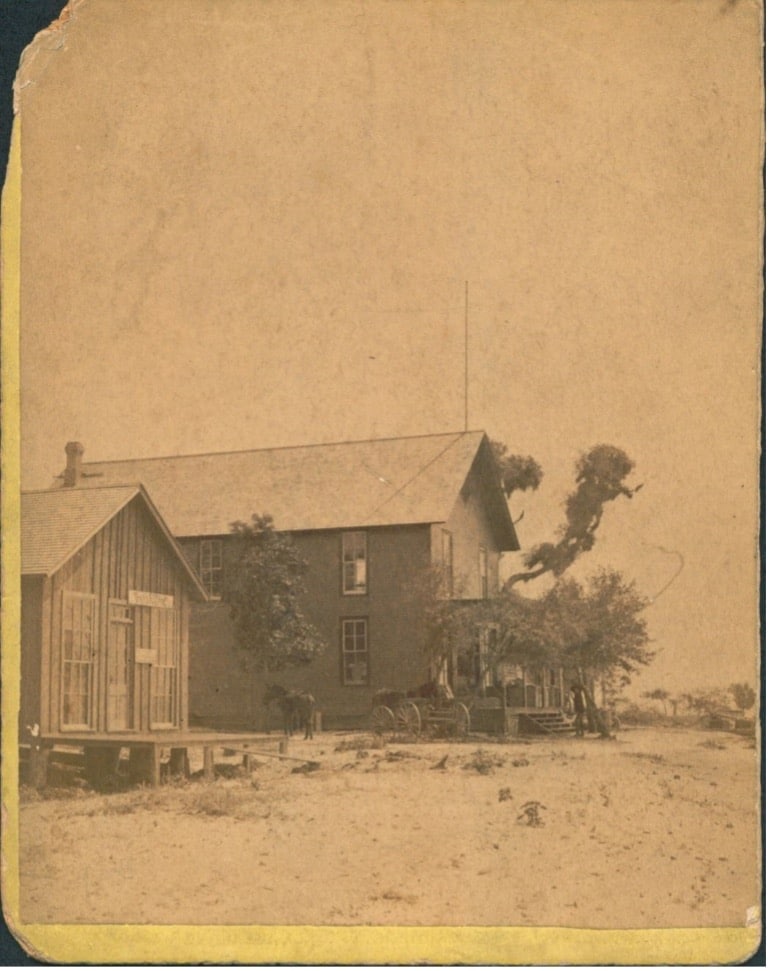
Lambert Ware visited the area in 1877 and then returned in 1879. His brother Francis joined him in 1882, and they operated Ware Mercantile and Ware’s Wharf on the present Harbour Village and St. Andrews Marina sites.
The town flourished again with salt, fishing, boat building, and shipping along the gulf coast. About this time, the St. Andrews Bay Railroad, Land, and Mining Company, locally known as the Cincinnati Company because they were based in Cincinnati, Ohio, advertised mail-order real estate with this descriptive:
“The loveliest location in all Florida. In a land where the genial climate of a winterless round of years will reward your every effort with the most bountiful harvests; where the summers are joyous seasons of refreshing breezes and invigorating nights of cool and healthful slumber; and where the winters are but bewitching contrasts to the summers in heightening and intensifying the delicious pleasure of a life in the fairest land the sun ever blessed with it’s genial kiss. There is but one Florida, and St. Andrews Bay is it’s brightest jewel.”
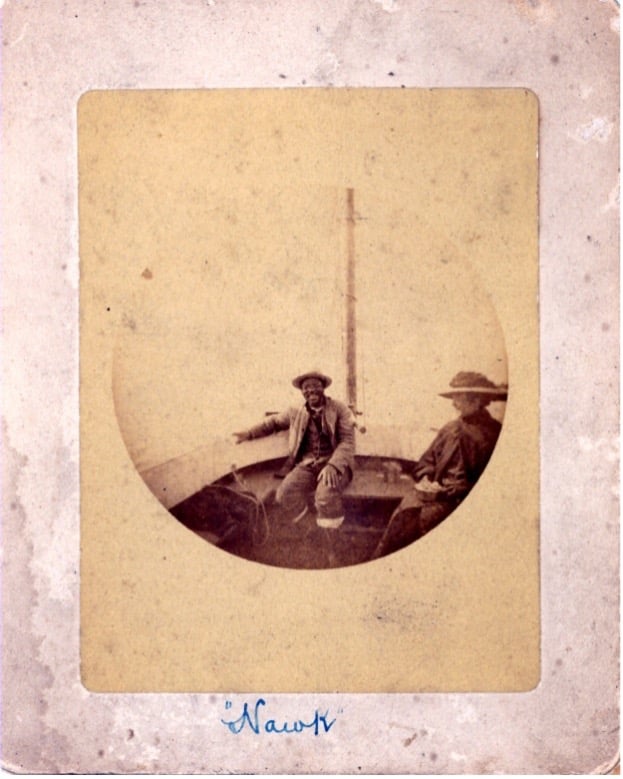
Initially, lots approximately 25 feet by 82 feet were sold for $1.25. Later the price escalated to $8 per lot in “St. Andrews by the sea.” The scheme finally busted, but not before some of the buyers decided they really liked the area and stayed.
George West purchased his home in St. Andrews in 1887. He met Hawk Massalina shortly thereafter, and Hawk taught him to fish, hunt, and navigate St. Andrews Bay. George spent winters here until he left railroading and moved here permanently in 1906.
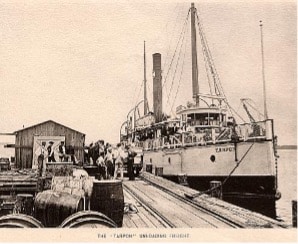
In 1908, St. Andrews was incorporated for the first time.
It continued to grow in the early 1900s and became a popular port on the coast. The SS Tarpon traveled between Mobile and Apalachicola, stopping like clockwork in St. Andrews, delivering beer, flour, and other supplies.
One could “set your watch” by the arrival and departure of the Tarpon, and the persistence of her captain and the fact she was overloaded led to her demise. He pushed her on through a storm to be on time, but she sank off Panama City Beach in 1937. The site is now an underwater archaeological preserve.
Due to the visionary efforts of George West, Panama City was incorporated in 1909. Panama City annexed St. Andrews and Millville in 1926.
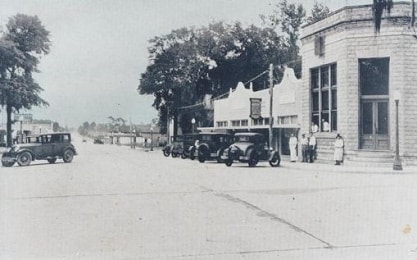
Wainwright Shipyard (current Port Panama City) was the site for constructing thirty-three Liberty Ships during World War II. Tyndall Airfield was also constructed during the war, and movie star Clark Gable, who enlisted in 1942, was stationed here during that time and patronized local restaurants in St. Andrews.
Charter boats, restaurants, attractions, and shops in St. Andrews were bustling with people in the mid-1900s. The community was a “destination.”
The center of attention shifted as Panama City Beach opened up to traffic. In the 1980s, commerce in St. Andrews took a sharp dive as the business community left for the new destination in Panama City Beach.
The Panama City commission recognized the need to revitalize St. Andrews. In 1989, St. Andrews was designated as a community redevelopment area. In 1997, St. Andrews was designated to the inaugural Waterfronts Florida program.
That, and various grants from the state of Florida, in the form of cash and technical assistance, were used to revitalize St. Andrews into a sustainable waterfront community. The redevelopment process has been an innovative and successful partnership between the city of Panama City and its citizens.

